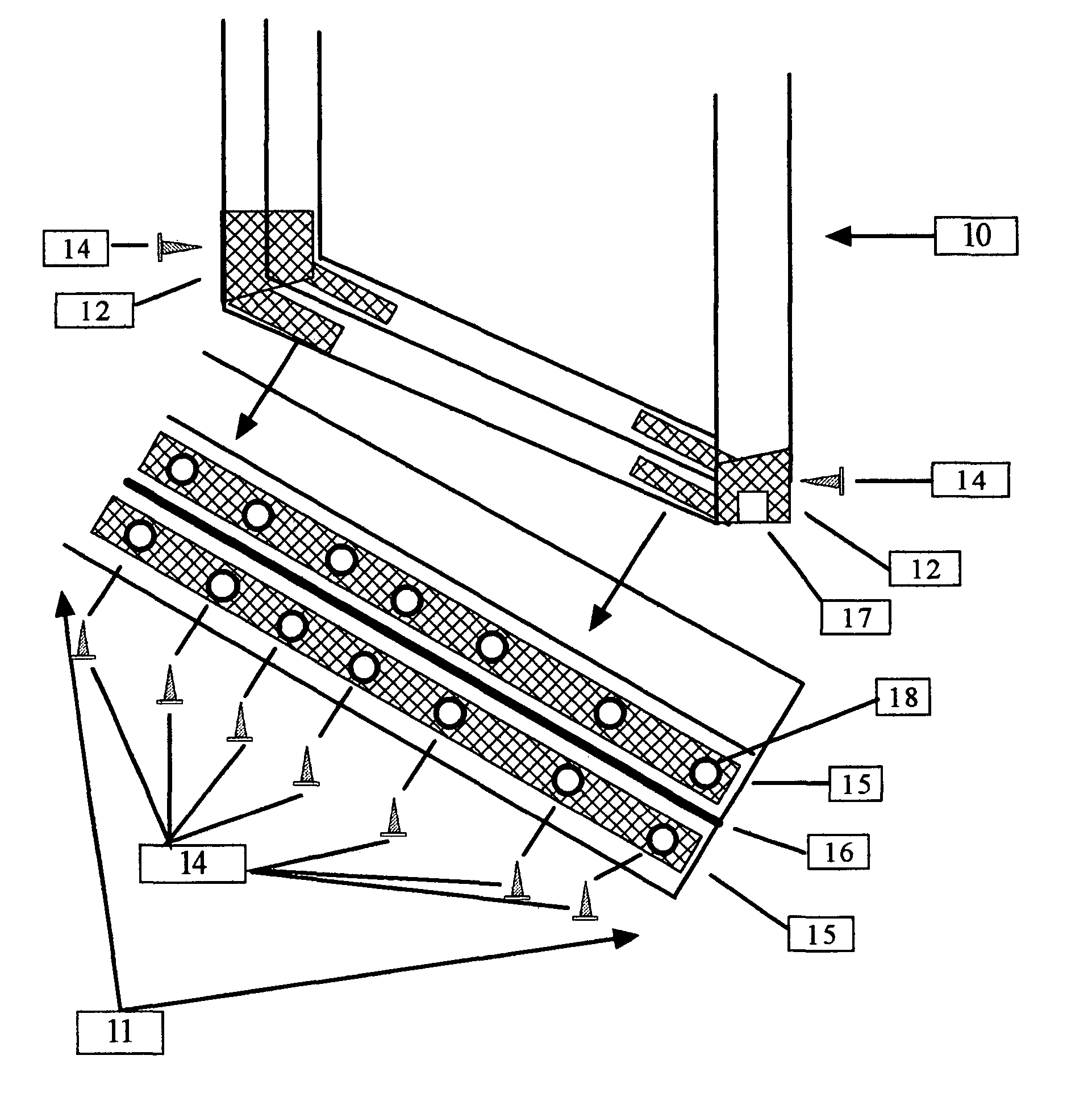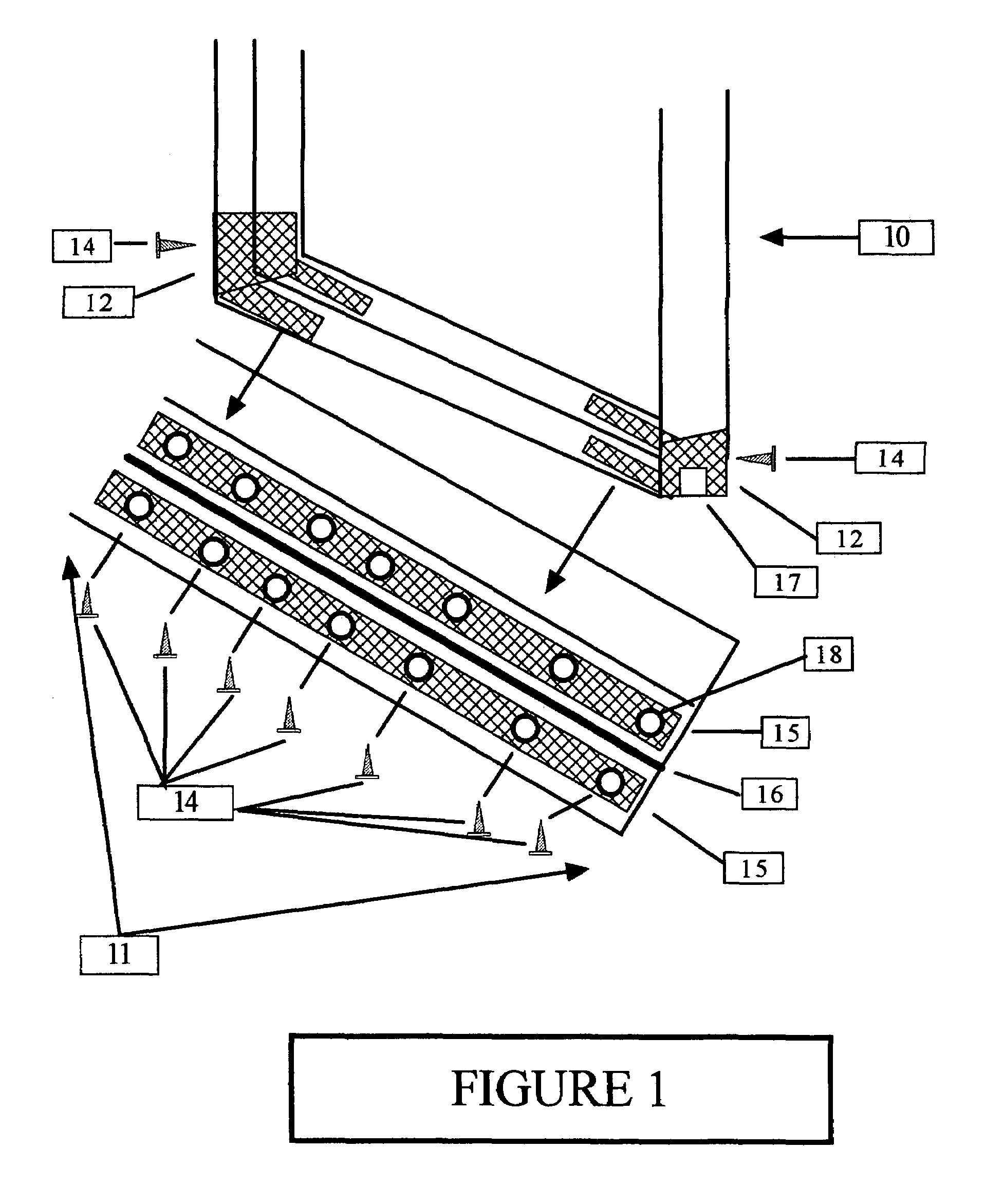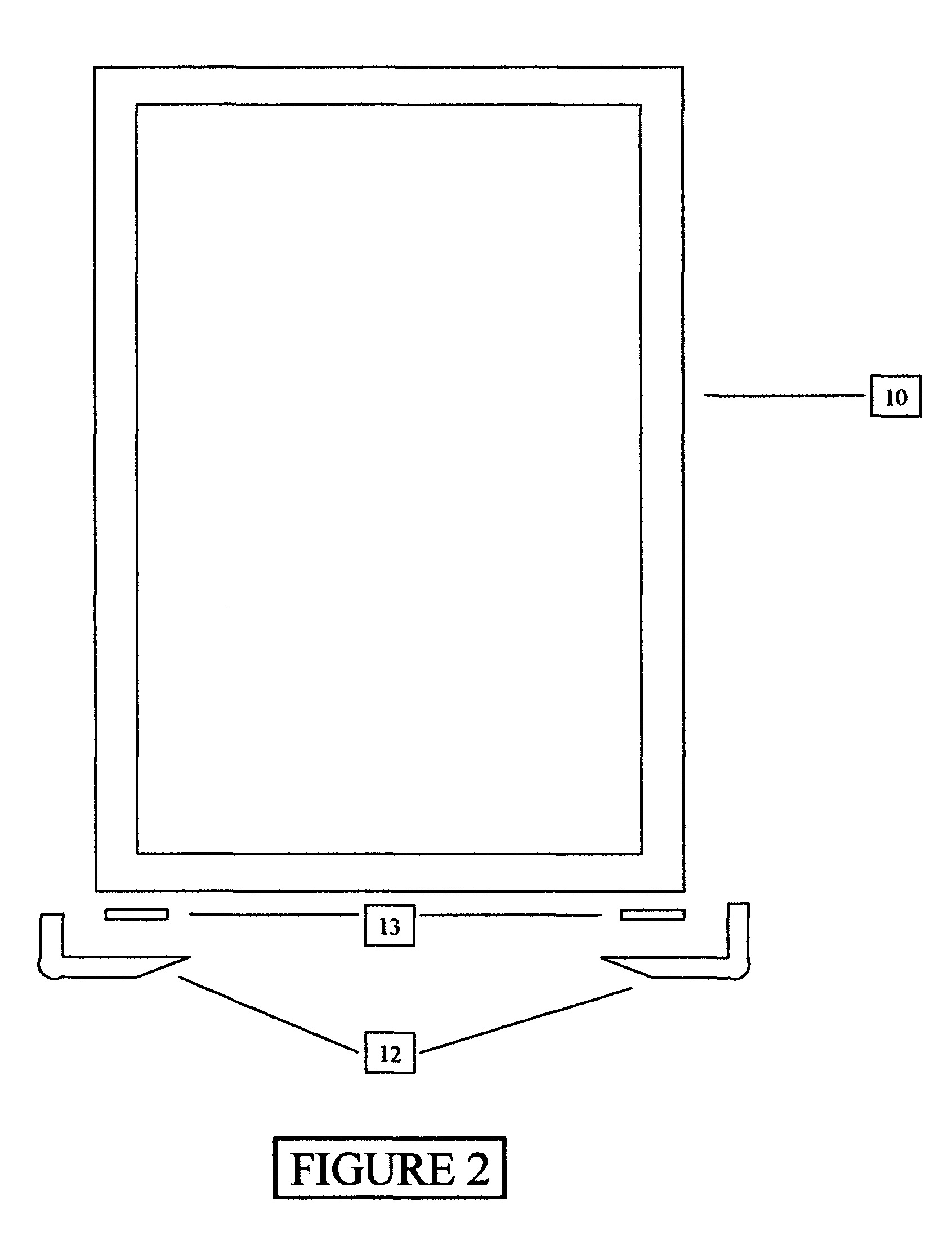Repair using plastic as the sliding mechanism for laterally sliding doors/windows
- Summary
- Abstract
- Description
- Claims
- Application Information
AI Technical Summary
Benefits of technology
Problems solved by technology
Method used
Image
Examples
Example
SUMMARY OF THE INVENTION
[0026]By using plastic on the corners of doors / windows and having the plastic come in constant contact and placing the weight of the door on the plastic adhered to the tracking, doors / windows slide relatively easily without time consuming and / or costly replacement of existing parts.
DETAILED DESCRIPTIONS OF THE DRAWINGS
[0027]While this invention is susceptible of embodiments in many different forms, there is shown in the drawings and hereinafter describe in detail, a preferred embodiment of the invention with the understanding that the present disclosure is to be considered as an exemplification of the principals of the invention and is not intended to limit the broad aspects if the invention to the embodiment illustrated.
[0028]FIG. 1 is an overall drawing of a preferred embodiment of this invention. This figure shows where a flat plastic, such as a high density polyethylene polymer, is laid flat on a door / window track (11) being used as a plastic tracking str...
PUM
 Login to View More
Login to View More Abstract
Description
Claims
Application Information
 Login to View More
Login to View More - R&D
- Intellectual Property
- Life Sciences
- Materials
- Tech Scout
- Unparalleled Data Quality
- Higher Quality Content
- 60% Fewer Hallucinations
Browse by: Latest US Patents, China's latest patents, Technical Efficacy Thesaurus, Application Domain, Technology Topic, Popular Technical Reports.
© 2025 PatSnap. All rights reserved.Legal|Privacy policy|Modern Slavery Act Transparency Statement|Sitemap|About US| Contact US: help@patsnap.com



